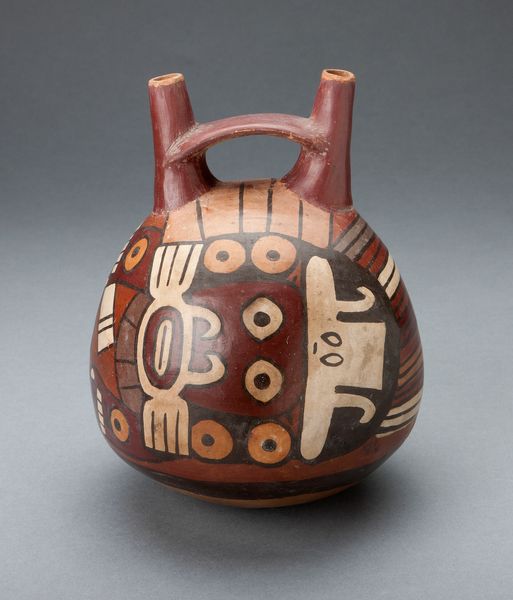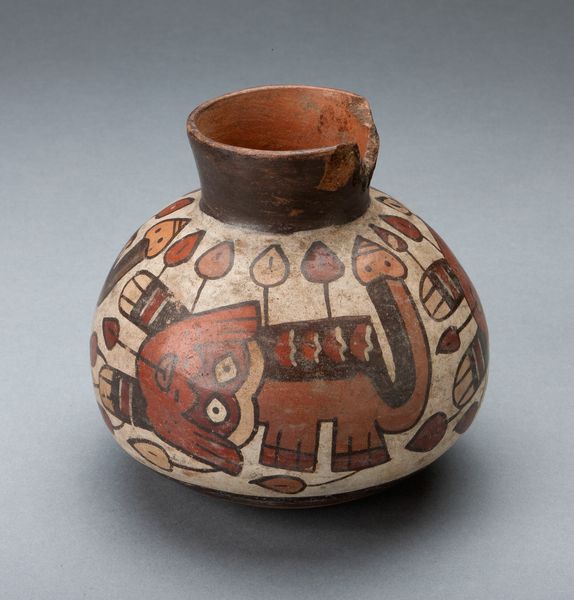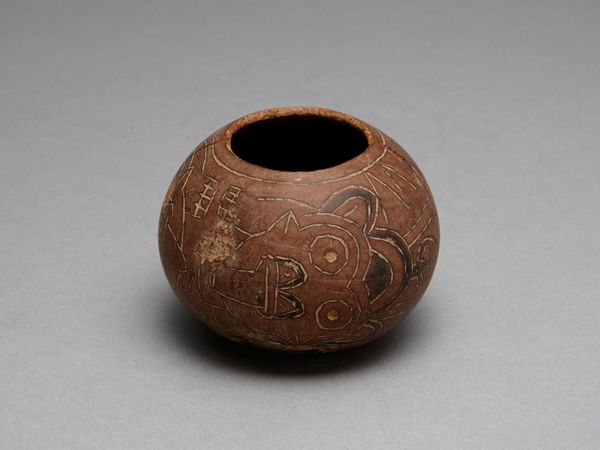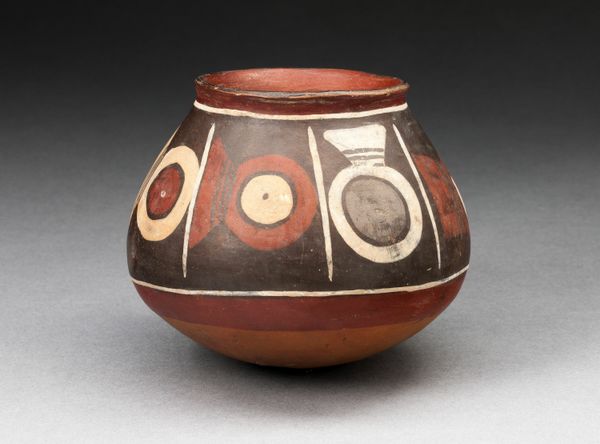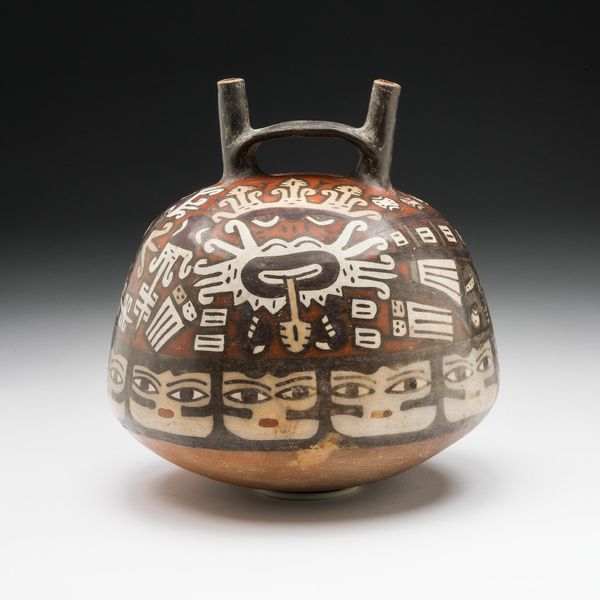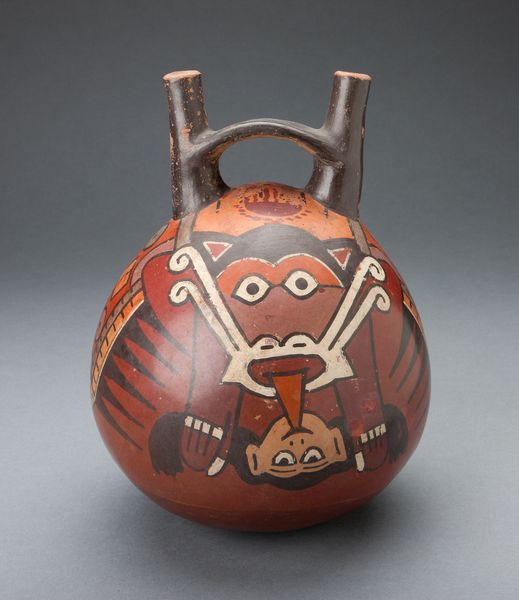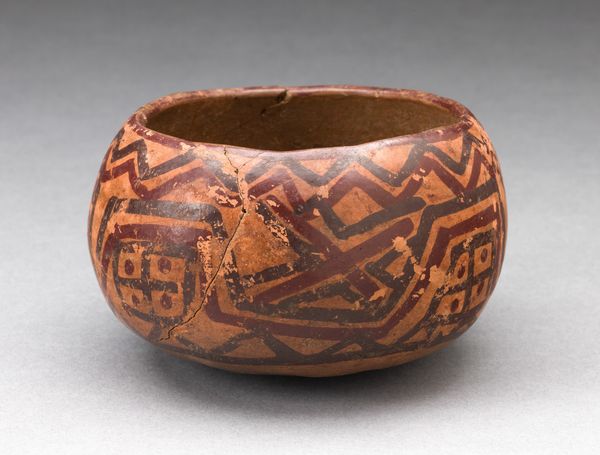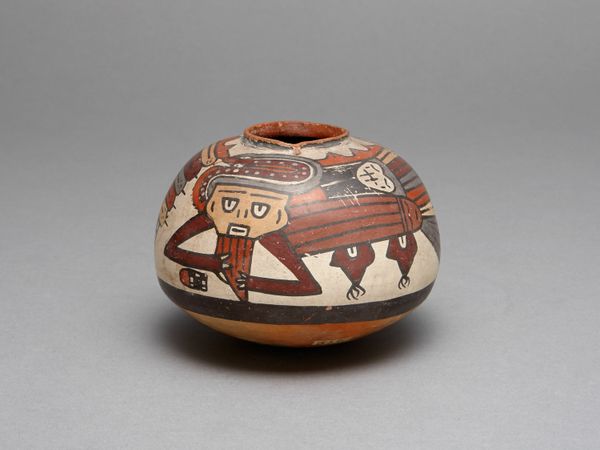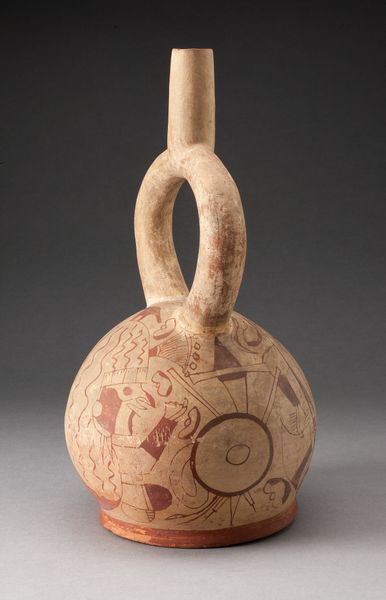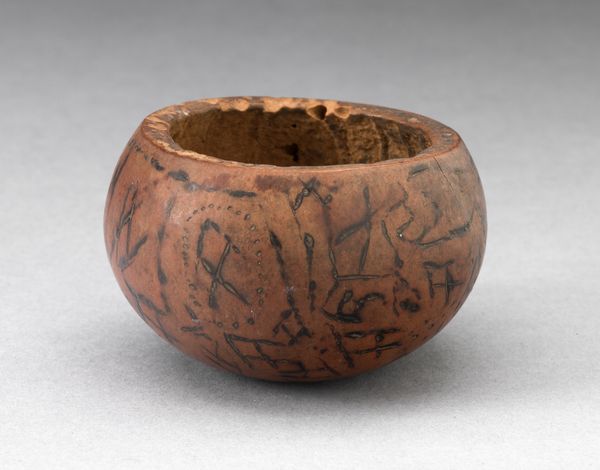
Stirrup Spout Vessel with Fineline Bean Warrior Motif c. 100 - 500
0:00
0:00
ceramic, terracotta
#
ceramic
#
figuration
#
ceramic
#
terracotta
#
indigenous-americas
Dimensions: 28.6 × 1.6 cm (11 1/4 × 5 3/4 in.)
Copyright: Public Domain
Curator: Let’s discuss this captivating ceramic piece: a Stirrup Spout Vessel with Fineline Bean Warrior Motif. It dates back to the Moche culture, around 100 to 500 AD. Editor: My immediate response is its fragility and quiet narrative. The terracotta has a subtle, earthy tone, almost as if the vessel is whispering stories of ancient rituals and conflicts through its delicate fineline drawings. Curator: Indeed, the meticulous linework is central to its significance. Semiotically, each stroke is pregnant with meaning. Observe how the artist has employed the "fineline" technique to render these complex figures on such a confined and curving space. What statements do these formalized depictions elicit for you? Editor: Well, considering the warrior motif, it offers glimpses into the social hierarchies and possibly the militaristic culture of the Moche people. Ceramic vessels like these weren't mere utilitarian objects, right? They served a function tied to display, perhaps elite funerary practice. Curator: Precisely. The formal constraints imposed by the spherical shape forces a deliberate compositional strategy. These warriors are stylized with what almost looks like weaponized beans which circle around the belly of the vessel. Do they refer to something vital in their society: perhaps military or agricultural importance? Editor: Absolutely. And it underscores the interconnectedness of war, ritual, and sustenance in Moche society. It would be fascinating to trace the iconography's political agency: how the imagery projected and solidified elite power? The use of narrative on an everyday object says so much. Curator: And consider the "stirrup spout" form itself. From a purely structural perspective, it’s a triumph of engineering. The twin spouts connected by a handle allow for both aeration and a controlled flow. We may be analyzing narrative representation but also considering ingenious material culture and craftsmanship. Editor: You’re right to point that out. And considering this now resides in the Art Institute of Chicago, how interesting to consider the circuitous journey of this ritual object, divorced from its original function but still bearing cultural significance to this day. Curator: It stands as an exemplary relic of a lost cultural and aesthetic value system. Editor: Yes, now recontextualized and reborn.
Comments
No comments
Be the first to comment and join the conversation on the ultimate creative platform.

